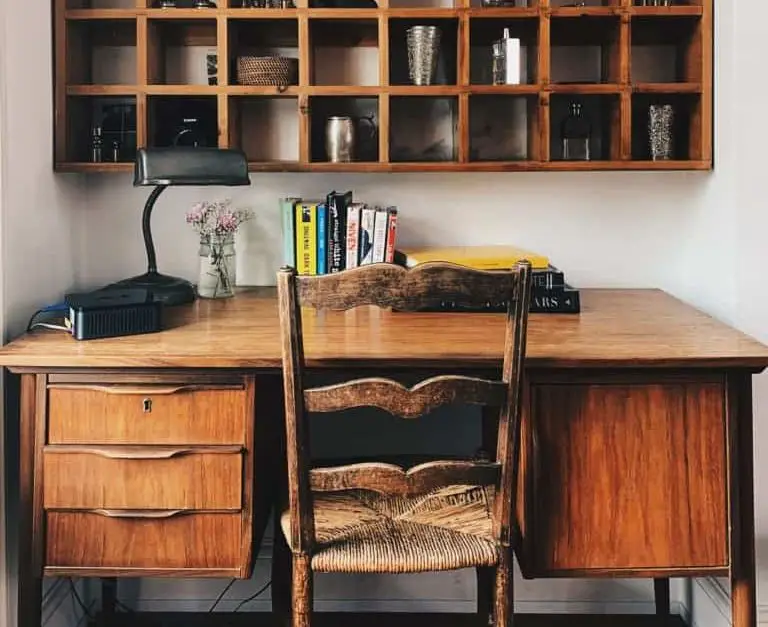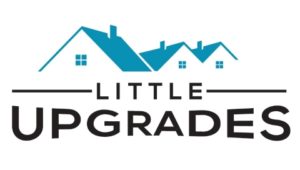
Contact paper is a great way to line the insides of cabinets, and drawers, and even give old furniture a new life. Since many of these surfaces are made of wood, one important thing you may be wondering is, will contact paper stick to wood or particle board?
Contact paper usually does not stick very well to wood or particle board. However, there are a few ways that you can get contact paper to stick to wood by applying extra adhesive. The downside of this approach is that it forms a permanent bond and could cause surface damage.
I’ve also got some tricks that you can use to get contact paper to stick better, so check-out the tips below. Here is an overview of what I’ll cover in this post.
Disclaimer: This post contains affiliate links. This means I may earn a commission should you choose to make a purchase using my link
Table of Contents
Will Contact Paper Stick to Wood or Particle Board?
Contact paper will usually not stick well to real wood or particle board on its own. However, if you’re okay with creating a permanent bond, you can apply contact paper to a wooden surface using adhesive, following these 6 steps:
- Wash or wipe down the area.
- Wait long enough for it to dry thoroughly.
- Use sandpaper to smooth the surface.
- Brush off or use a hair dryer to remove dust.
- If necessary, apply spray adhesive or contact cement.
- Apply the paper.
Remember, this is only ideal in situations where you intend to create a permanent bond. Using any type of adhesive will make it very difficult to remove the paper once it has dried.
And that raises another important question…
Will Contact Paper Ruin Wood?
Decorative contact paper is available in both adhesive and non-adhesive versions. Using a non-adhesive, rubber-backed, or even clear vinyl contact paper would be ideal if you plan on removing it from wood at any time.
While contact paper itself will not ruin wood when applied, the self-sticking type may cause some damage if it is removed. When removing adhesive paper, it tends to leave a sticky residue.
Since wood is a porous material, it is difficult to prevent that residue, therefore, it’s usually best to only apply it to wood if you plan on leaving it there permanently.
Two potential alternatives to contact paper you could consider are using shelf liner, drawer liner, or washi tape, depending on the type of covering you’re aiming for.
3 Common Contact Paper Problems
1. Adhesive is Difficult to Remove
Sometimes removing old contact paper can be challenging, not only on wooden surfaces but on many other surfaces as well. Fortunately, with a bit of patience, hard work, and a few household tools, it is possible.
You will need a hairdryer, a plastic scraper, and possibly some adhesive remover and you’re ready to go.
To help make this process as easy as possible, follow these steps:
- Set the hairdryer to medium and turn it on
- Move the hairdryer over the surface in a slow, steady, back-and-forth motion
- While applying the heat, pull the paper away from the surface starting at the corner
- Continue applying heat and pulling the paper until it’s removed.
- Soak a sponge with adhesive remover and scrub the wood to remove any sticky residue.
- Clean the wood with a cloth soaked with warm soapy water.
- Wipe clean with a damp cloth and towel dry.
2. Residue is Left Over After Removal
Sometimes, despite all your efforts, there is some stubborn residue that remains after you remove old contact paper.
If you have tried adhesive remover and it did not work, here are a few unconventional tricks you may want to try:
- Goo-Gone (See on Amazon)
- Nail Polish Remover (do not use on plastic)
- WD-40
- White Vinegar
- Rubbing Alcohol
Always be sure to try these in an inconspicuous area first to make sure it does not harm the surface, depending on what you are removing the residue from.
3. Paper Does Not Stick
If you are having trouble getting your paper to stick it may have something to do with the quality of the paper. Lower-quality paper tends to be thinner and has less glue adhesive included.
Another thing to consider is how long you have had the paper. It is best to purchase a fresh new roll of contact paper.
That way you can be sure the adhesive hasn’t lost any of its stickiness due to age or perhaps change in temperature.
Lastly, always be sure the surface you are applying the contact paper to is clean and dry, dust and lint-free, and does not have any greasy residue.
3 Tricks to Get Your Contact Paper to Stick Better
1. Paint the Surface before Applying Paper
This will give your surface a fresh clean surface which will allow for better adhesion. Here’s what you do:
- Lightly sand the surface
- Apply a coat of paint or primer
- Allow it to dry thoroughly
2. Use a Squeegee or Paint Roller
This will ensure that the adhesive is fully bonded to wood or other surfaces and help remove any extra air bubbles that might be trapped inside.
Here are the key steps:
- Align paper at the edge of the surface.
- Roll over the contact paper as you apply it.
- When complete, roll over the entire area again.
3. Use Spray Adhesive
If you want to ensure that your contact paper will stick, you can apply some spray adhesive. The spray adhesive will stick best to rough surfaces so here are the main steps:
- Lightly sand the surface.
- Brush off the surface.
- Apply an even coat of adhesive to the relevant area.
- Apply the paper.
- Continue this process until the entire surface is covered.
When applying spray adhesive, be sure to hold the can in an upright position, about 8-10 inches from the surface. Spray an even coat, only on the area you are working with.
Also, be sure to wear the proper protective gear, and only spray in a well-ventilated area. Safety first 🙂
Bonus Tips!
Bonus Tip #1
If you are having trouble removing old contact paper, an alternative may be to paint over it. However, ordinary latex or oil paints will not adhere very well.
Therefore, you must use an appropriate primer before applying the paint if you want to do a quality job that will last.
Bonus Tip #2
Using soapy water in a spray bottle or Windex when applying adhesive contact paper will give you the freedom to move the paper without it immediately bonding to the surface. This allows you to reposition the paper if it is not laid correctly the first time, cutting down on errors and extra work.
Bonus Tip #3
A good alternative to wood or particleboard is a medium-density fiberboard (MDF). It is a versatile building material that is still a wood product but features a smooth surface. It is great for shelving and other DIY projects and can be more easily covered with contact paper without the extra prep work.
Related Questions
Does Contact Paper Remove Easily?
Due to its durability, contact paper may not be easy to remove, but it is possible. It can be done with a hair dryer, a plastic scraper, and (if necessary) some adhesive remover. However, there may be some surface damage or remaining adhesive residue left after you’ve finished removing it.
Can Contact Paper be Used on Walls?
When decorating walls it may not be a good idea to use the same contact paper that you would use on wood. However, peel-and-stick wallpaper could be a good alternative, depending on your situation. If you rent your home, be sure to check with your landlord before making any changes to the walls.

